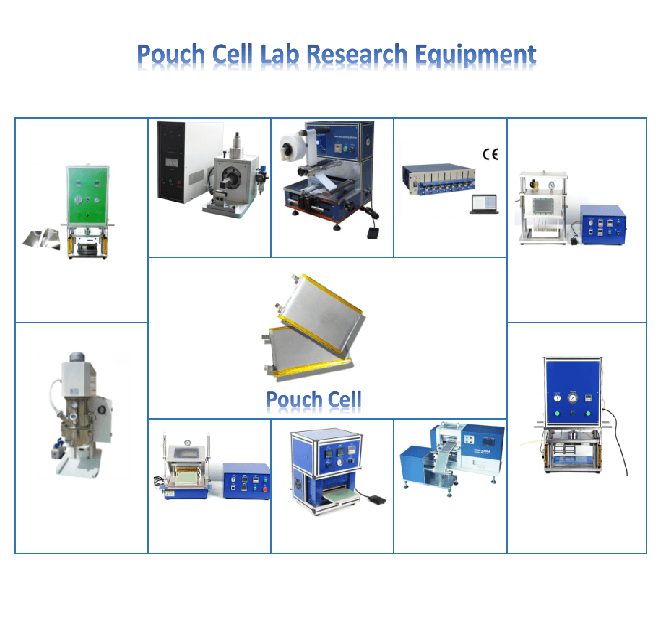

Pouch cell pilot scale line is used for testing and validating manufacturing processes for pouch cells on a smaller scale before full-scale production. Here is an overview of the pouch cell pilot production process and some precautions to be taken into consideration:
Pouch cell pilot lab line Process:
Electrode Preparation:
Coating: Apply electrode slurry onto the current collector.
Calendering: Compact the coated electrode to the desired thickness.
Separator Preparation:
Coating (if necessary): Apply a separator coating if needed.
Assembly:
Stacking: Assemble coated electrodes and separators in a layered structure.
Winding (if applicable): Wind the layered structure into a jelly roll configuration.
Encapsulation:
Injection Molding: Encase the wound electrode stack in a pouch-shaped housing.
Sealing: Seal the edges to prevent electrolyte leakage.
Formation:
Charge/Discharge Cycling: Subject the assembled cells to controlled charging and discharging cycles to stabilize performance.
Testing and Quality Control:
Voltage Testing: Measure the voltage characteristics of the cells.
Capacity Testing: Assess the capacity of the pouch cells.
Impedance Testing: Evaluate the internal resistance of the cells.
Packaging:
Grouping: Group individual pouch cells into battery packs.
Packaging: Assemble and package pouch cells into a final product.
Precautions:
Safety Measures:
Implement strict safety protocols to prevent accidents, especially during electrode coating, where flammable materials are used.
Quality Control:
Perform rigorous quality control at each stage to identify and address any defects or irregularities in the Pouch cell lab line
Formation Process:
Monitor and control the formation process carefully to ensure uniform and stable performance of the pouch cells.
Electrode Coating Optimization:
Experiment with coating parameters to achieve optimal thickness and uniformity, ensuring consistent performance.
Material Handling:
Exercise caution in handling electrode materials, electrolytes, and other chemicals to prevent contamination and ensure worker safety.
Equipment Calibration:
Regularly calibrate and maintain the coating, calendering, and other equipment to ensure accurate and precise manufacturing.
Waste Disposal:
Properly dispose of waste materials, especially those containing hazardous substances, in accordance with environmental regulations.
Training and Education:
Provide thorough training to personnel involved in the pouch cell pilot production process to ensure they are aware of safety measures and best practices.
Documentation:
Maintain detailed records of the entire production process, including parameters used, test results, and any deviations from standard procedures.
Environmental Controls:
Maintain controlled environmental conditions, such as temperature and humidity, to ensure consistent manufacturing conditions.
By following these precautions and best practices, manufacturers can enhance the safety, efficiency, and reliability of pouch cell pilot production. Additionally, the pilot production phase allows for valuable insights that can inform improvements and optimizations before scaling up to full production.
No. 5 Nanshan Road, Huli District, Xiamen City, Fujian Province, China
 Subscribe to us
Subscribe to us ONLINE
ONLINE Louis@lithmachine.com
Louis@lithmachine.com +0086 15959378975
+0086 15959378975